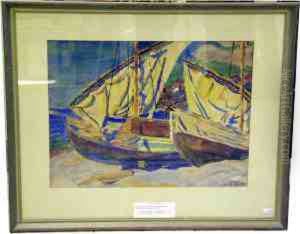Constantin, Baron Rausch De Traubenberg Paintings
Constantin, Baron Rausch de Traubenberg, was a figure not widely known in the mainstream art history narrative, primarily because his contributions were not solely confined to the realm of visual arts. Born in 1822 into nobility, his life was a fascinating interplay of military service, artistic endeavor, and engagement with the intellectual currents of his time. His lineage afforded him opportunities in education and travel, which were somewhat rare for the era, fostering a broad worldview that would later influence his artistic and scholarly pursuits.
Rausch de Traubenberg's early years were spent in the military, following a path expected of someone of his standing. However, unlike many of his contemporaries who would remain within the confines of their expected roles, he developed a keen interest in the arts and sciences. This was a time of significant change in Europe, with the revolutions of 1848 and the broad sweep of Romanticism affecting every aspect of intellectual and cultural life. It was within this context that Rausch de Traubenberg began to explore his artistic talents, though detailed records of his works are sparse.
His contributions to art, while not as prolific or renowned as those of his contemporaries, were nonetheless significant for their intersection with his intellectual interests. He was known to be an avid collector of art and an amateur painter, though few of his works have survived or been documented. His real influence, however, may have been as a patron and connector of artists and intellectuals. Through his extensive travels and social position, Rausch de Traubenberg was able to foster relationships and dialogues between various figures in the European artistic and intellectual communities, thereby contributing to the broader cultural movements of his time.
Despite his engagement with the arts, Rausch de Traubenberg's legacy is somewhat elusive, partly due to the lack of extensive records on his life and partly due to his diverse interests that spanned beyond the art world. He died in 1899, leaving behind a legacy that, while not clearly defined within the art historical canon, represents a fascinating example of the interplay between art, nobility, and intellectual pursuit in the 19th century.
